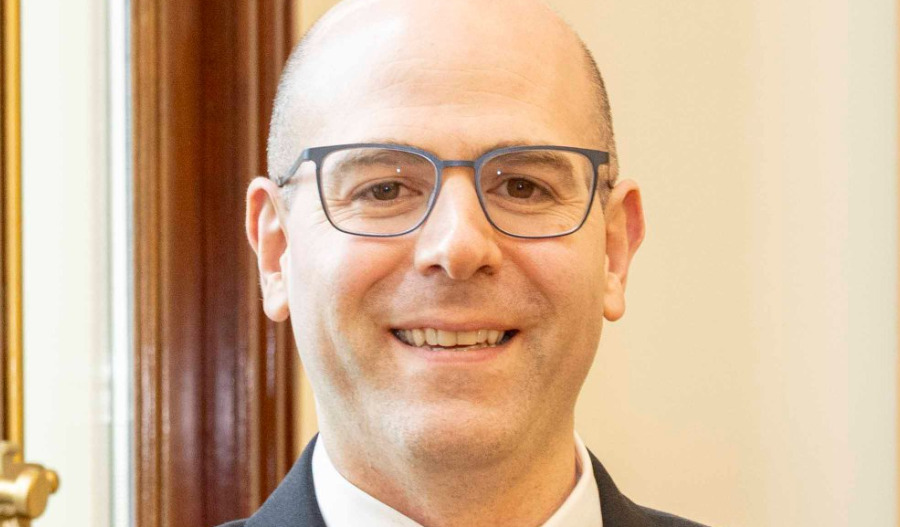Every year, an obscure valley in the state of Wyoming - Jackson Hole - captures the world’s attention when it plays unlikely host to an annual Economic Symposium, which includes some of the world’s leading economists and monetary policymakers.
Given the mounting political pressure on Federal Reserve (The Fed) chair Jerome Powell, this year’s annual economic pow wow at Jackson Hole – which kicks off on Friday (U.S. time) – is expected to provide long-awaited clarity into the central bank’s thinking on more interest rate cuts and the implications for Americans' wallets.
Much to the frustration of United States President Donald Trump, Powell has not succumbed to bullying and has kept rates on hold in light of recent inflation readings that reveal price pressures remain above the Fed’s target of 2%.
Also worrying Powell and fellow members of the Fed’s board is the weakening state of the U.S labour market.
Given that markets are pricing in a quarter to half a point cut for September – with some even expecting a bigger move - Powell’s guidance later this week can’t be understated.
What’s also creating an interesting backdrop to Powell’s comments is the recent appointment of Trump-loyalist Stephen Miran to the central bank’s policy board.
As well as endorsing Trump’s call for interest rate cuts, Miran is also a fan of changes to Fed governance that would hand presidents the power to dismiss the likes of Powell at will.
Assuming Miran is confirmed by the Senate in time for the September 16-17 Fed meeting, Powell could face three potential disruptors from within his own seven-strong board.
So with all this playing out, the typically mild-mannered Powell may use Jackson Hole to throw some incendiaries into otherwise insipid central bank rhetoric.
But regardless of what Powell says, the market will be hanging on every word.
Is the Fed is backed into a corner?
Despite the chair’s expected caution, Nigel Green, CEO of deVere Group, argues that the U.S. central bank will move by 25 basis points next month.
“Powell will try to steady the market narrative in Jackson Hole,” says deVere.
“He doesn’t want to give the impression that the Fed has already signed off on a cut. But when you strip away the rhetoric, the evidence is compelling. We believe that rates are coming down in September.”
With the jobs engine looking weaker than policy makers thought – with the unemployment rate having ticked up to 4.2% - deVere believes a shift in momentum clearly justifies fresh action from the Fed.
While the unemployment numbers suggest the sharp slowdown in hiring this northern summer might be down to supply-side factors, such as a fall in immigration, this isn’t something the central bank can do much to counteract.
Nobody should expect Powell to give Wall Street a green light at Jackson Hole, but what happens at this event will shape sentiment in the run-up to the September 16–17 Federal Open Market Committee FOMC meeting.
Meanwhile, deVere is adamant that the jobs market has delivered the Fed the evidence it needs, which it cannot ignore without damaging its credibility.
With that in mind, Green believes investors should prepare for a turn in policy.
While Powell will likely push back at Jackson Hole, Green reminds the market that the numbers will ultimately do the talking.
“The Fed can deliver tough talk in Wyoming, but the hard data will drive policy.
“Powell can push back all he likes this week – but we predict that in September, the Fed will cut by 25 basis points.”'
Mixed data fuels rate cut uncertainty
However, Benoit Anne, senior managing director at MFS Investment Management, isn’t so sure that a U.S. rate cut is a done deal.
He also reminds the market that while the Fed is data-dependent, it doesn’t mean that one single data release can necessarily change the whole policy outlook.
For a number of reasons, he argues that the near-term Fed outlook is a lot murkier than the market pricing suggests.
Adding to this murkiness, Benoit Anne is mixed on recent U.S. economic data, which makes it harder for Powell to balance the Fed’s dual mandates of maximum employment and stable prices.
For example, while a gloomy jobs report for July has heightened concerns about the health of the labour market, a hot producer price index figure reignites concerns that tariffs will create greater hip-pocket pain for U.S. consumers.
Fed may stick to its guns
Firstly, on balance, the investment manager claims the evidence that the labour market is deteriorating sharply is still insufficient, while on the political pressure front, he expects the Fed to stick to its past stance in defense of its independence.
“Beyond employment, there is still the persisting uncertainty over the impact of tariffs on inflation, which warrants some prudence, especially as inflation continues to look sticky.”
Meantime, while the health of the U.S. consumer is a critical consideration when analysing the U.S. macro outlook, the latest update of Market Insights’ Health of the Consumer Indicator - based on labor, spending, income, debt, wealth, and credit availability - doesn’t signal any signs of mounting stress.
Likely but not guaranteed
In summary, the latest Producer Price Index (PPI) - which measures the change in the price of goods sold by manufacturers - and Fed officials' response has sown greater seeds of doubt over a September rate cut being a fait accompli.
But doves argue that, at 4.25% to 4.5% the Fed’s benchmark range remains in “restrictive” territory, limiting growth at a time when the U.S. labour market might be on the turn and the economy showing signs of slowing.
Clearly, more bad data on jobs would see more economists and monetary policymakers calling for 0.5 percentage point cut.
While U.S. Treasury Secretary Scott Bessent wants to see a more aggressive approach to rate cuts, Trump wants to see a more extreme approach.
In an attempt to save the government hundreds of billions of dollars on debt repayments, Trump wants to see borrowing costs slashed to a low of just 1%.
Meanwhile, it’s unclear whether Miran can keep pushing for such steep rate cuts without tarnishing not only his own reputation but that of the central bank - assuming his board appointment is approved.
“I suspect he would not be nominated if he did not believe that he should be cutting rates and he will certainly come into it with a pro rate-cutting view,” said who taught Miran microeconomics in his first semester at Harvard said Glaeser who taught Miran microeconomics in his first semester at Harvard.
“But he will listen to his colleagues and do his best to be a decent member of this group.”



